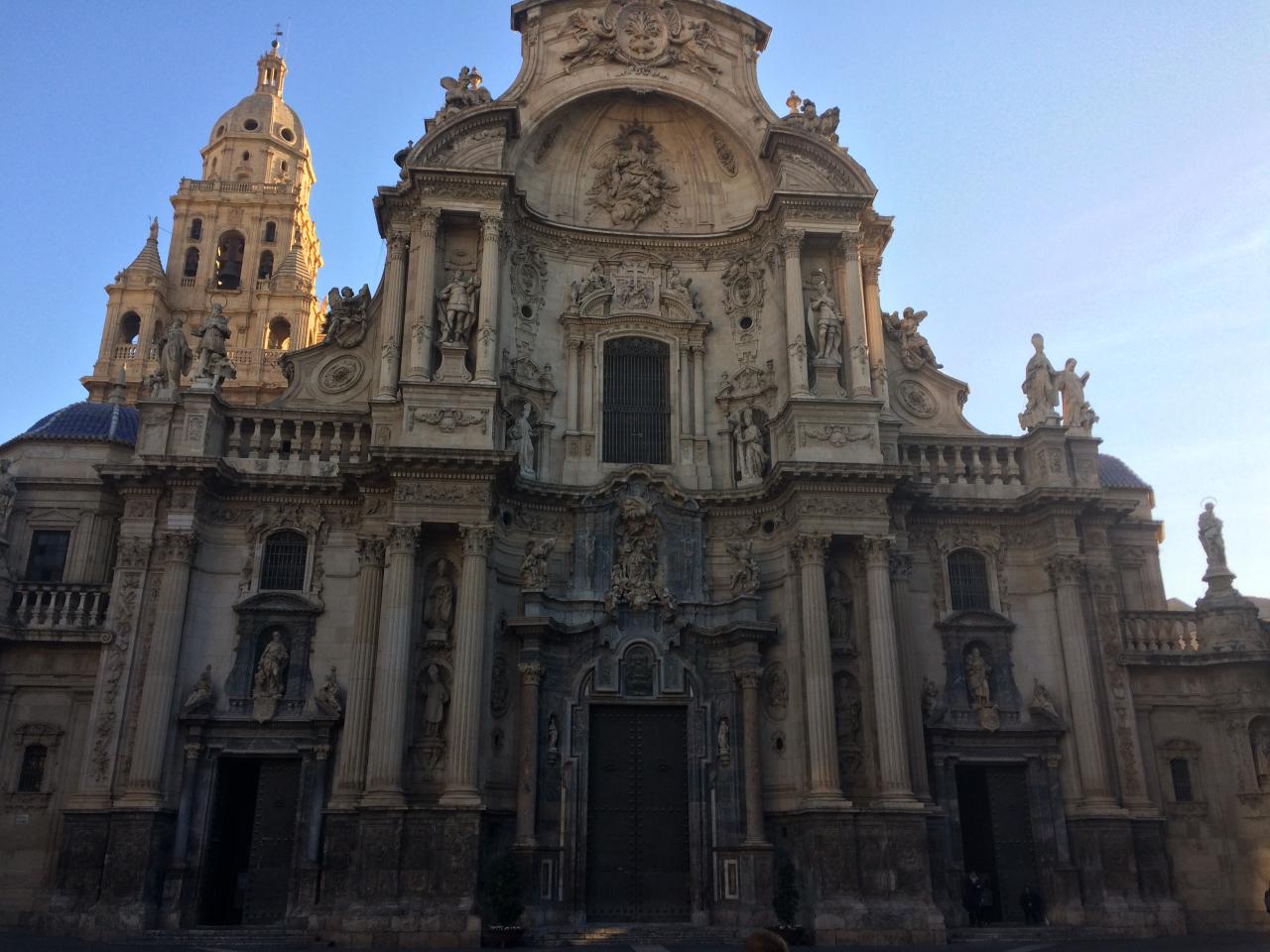
The article picks up where we left off in the previous article, which you can read here: Urbact Interactive Cities Transnational Meeting Murcia – Part One
Day two – morning
The Workshop on Teambuilding and Optimizing Human Resources was followed by a second workshop, presented to us by Nacho Tomás, Managing Director of N7 (digital communication and marketing) approaching the digital communication and digital communication tools form the public administration’s point of view, targeting citizens as receivers and end-users of the “message” being launched, and taking into account the desirability of reciprocity and dialogue.
Digital communication in our personal lives has far outpaced the way we communicate in the workplace and in work-related surroundings, so citizens are now demanding better communication tools and more “access”, communication wise, to their public institutions. To expect citizens to work any other (traditional) way is a massively missed opportunity or any public entity to establish a meaningful dialogue with its audience.
It allows us to have access to a local citizen pool that can connect across neighbourhoods, languages, classes, generations, etc. and the opportunities to connect authentically, as you would in person, using the latest in technology and following user trends, which is where choosing the right tools for your organization can be a difficult and even frustrating process. Considering the sheer number of apps coming to market every week, it can be difficult to determine which one is right for your communication needs, and the ones you do choose, may not work as expected as time goes on.
During the workshop we addressed topics such as corporate identity and how to relay that identity via digital communication channels, as well as defining the communication objectives of an organization, and how to choose the adequate tools. Where do we communicate? When do we communicate? How to manage a communication crisis? Etc.
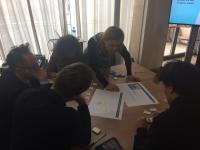
|
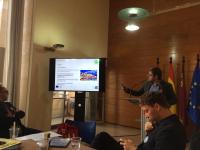
|
Also when it comes to advertising, as was established in the session, advertisement is important because 1) not everyone know how to find you or which channels they have at their disposition for following or contacting you, and 2) the greater the impact, the more your message gests out there. New social media networks come out every week, most of which will never gain any sort of traction, which is why logic dictates, it’s best to start with the most popular platforms, and once you have a calendar and steady impacts up and running, you can try and establish experimental campaigns.
Day two – afternoon
In the afternoon sessions we focussed of joint network activities, planning and outlining specific actions, coordinating efforts and making sure the administrative part of the project is on track and meets all outset requirements, as well as a review of the documentation that remains to be submitted to the lead partner.
We started with a joined session, where all partners were present in their full capacity, and attended an outline of the communication activities until May 2018, which had to be planned carefully as to maximise impact, as well as obtain a homogeneous distribution, not allowing for gaps in the outward projection of the network, e.g. publications. The session was prepared by our lead partner and relied on specific input the partners have provided previously to the transnational meeting.

|

|
After this global communication session, the attendees split into two working groups, the Steering Committee, headed by the lead partner formed an advisory committee to provide guidance on key issues such as policy and objectives, budgetary control and allocation, and decisions involving strategy. The impact of the steering committee on project performance and their role in assuring compliance with the submitted and approved project, as well as the rules and guidelines for e.g. spending and communication, ULGs, deliverables, etc. creates value for the project management capabilities on a local level, and playing an important role in the selection, initiation, definition, and control of the project. As on the organizational level, it is of vital importance to implement and maintain project management standards.
The sessions with expert input addressed specific questions and debates ensued, which in turn ensured participation and feed-back, of the project in itself, the specific sub-themes and individual cases of the network partners. This was followed by a series of conclusions, an clarification and further details as to the tasks at hand that are to be completed before the final meeting in Genoa. As such a timeline was established, in both sessions, one for compliance with the project, and another for the deliverables of our Integrated Action Plans.
Day three – morning
The third and last day of the Urbact Interactive Cities Network Transnational Meeting started in City Hall, where we had a practical session about Dynamic Feedback & Expert Response to Digital Tools for Citizen Engagement, a peer review based model where active participation of all attendees was expected and encouraged. The working title “Online Platforms for Citizen Participation and Transparency” might strike as ambiguous, but soon it became clear what we were dealing with and what the key-objectives of the platform are.
Murcia City Hall is developing, within the City Strategy Murcia 2020 and the Murcia Smart City Initiative “MiMurcia” a new outline for the official web-page of Murcia City Hall, with all its departments, services, etc. this includes citizen engagement and participation (direct links to the citizen participation platform and the transparency portal), and providing the mean to access relevant and desired information on behalf of said citizens. This is why Murcia, working with Everis, has engaged in modernizing and updating the most basic access portal any institution may have, the official web-page. The session addressed the analysis of user handling and engagement of the webpage that is being created, concentrate on specific aspects as responsive web design, dynamic changes and usable experience across devices.
The Urbact Interactive Cities members were engaged in an interactive and dynamic exercise where they were asked to form teams and put themselves in the shoes of specific predetermined citizens, e.g. Maribel – a 50-year-old saleswoman in a local business who works long days and takes care of her parents –, Pepe – a 45-year-old former salesman, who is currently unemployed and who needs either a job, or additional training/recycling to obtain one –, etc. and were asked to map their interests considering the premise “What can the city do to meet the needs of the citizens through the use of digital media?” through Individual ideation, Collective categorization of ideas, Selection and further development of one idea and the subsequent presentation.
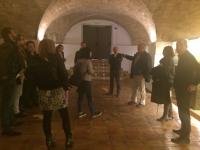
|
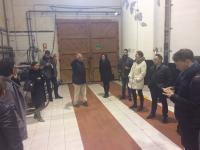
|
Afterwards the main part of the group went on the last presentation and site visit, although unfortunately some attendees had to leave due to travel connections. The last presentation of the meeting was about European Projects, and European Networks, focussing on the underlying philosophy of the projects we prepare and participate in, one of the main conclusions was that “size doesn`t matter”, the participation in European programmes, as a partner or a lead partner, is not limited by the number of inhabitants of a municipality, and great things can be achieved in small places.
The following site-visit showed the use of local identity as a differentiator in key aspects ranging from communication, economy, tourism, etc. to the distinct link with other municipalities that share certain identity traits, which, if handled and exploited correctly, lays the groundwork for network creating and international collaboration.
Conclusion
After three days of intense work in meetings, working sessions, expert interventions, site-visits and presentations, we concluded the Urbact Interactive Cities Transnational Meeting in Murcia. We can only hope our guest have enjoyed as much, learnt as much, and progressed in their IAPs and project deliverables as much as we have.
One of the key-values Urbact brings to any city that participates in an Urbact Network, is not only the urbact method, funding, expertise and support, it is the people we get to connect with, bringing 10 cities closer together, and having us understand we, as a city, are not alone in the problems, difficulties and challenges we face on a daily basis, but that there are colleagues and partners working on these same issues, which Urbact converts in a learning and improving experience for all participants.
Following the saying commonly employed by the European Union: "shared problems, joint solutions and collective achievements", programmes like Urbact and project like Interactive Cities, will prepare our cities to face the challenges of tomorrow.
Kasper van Hout
Urbact Interactive Cities Murcia
